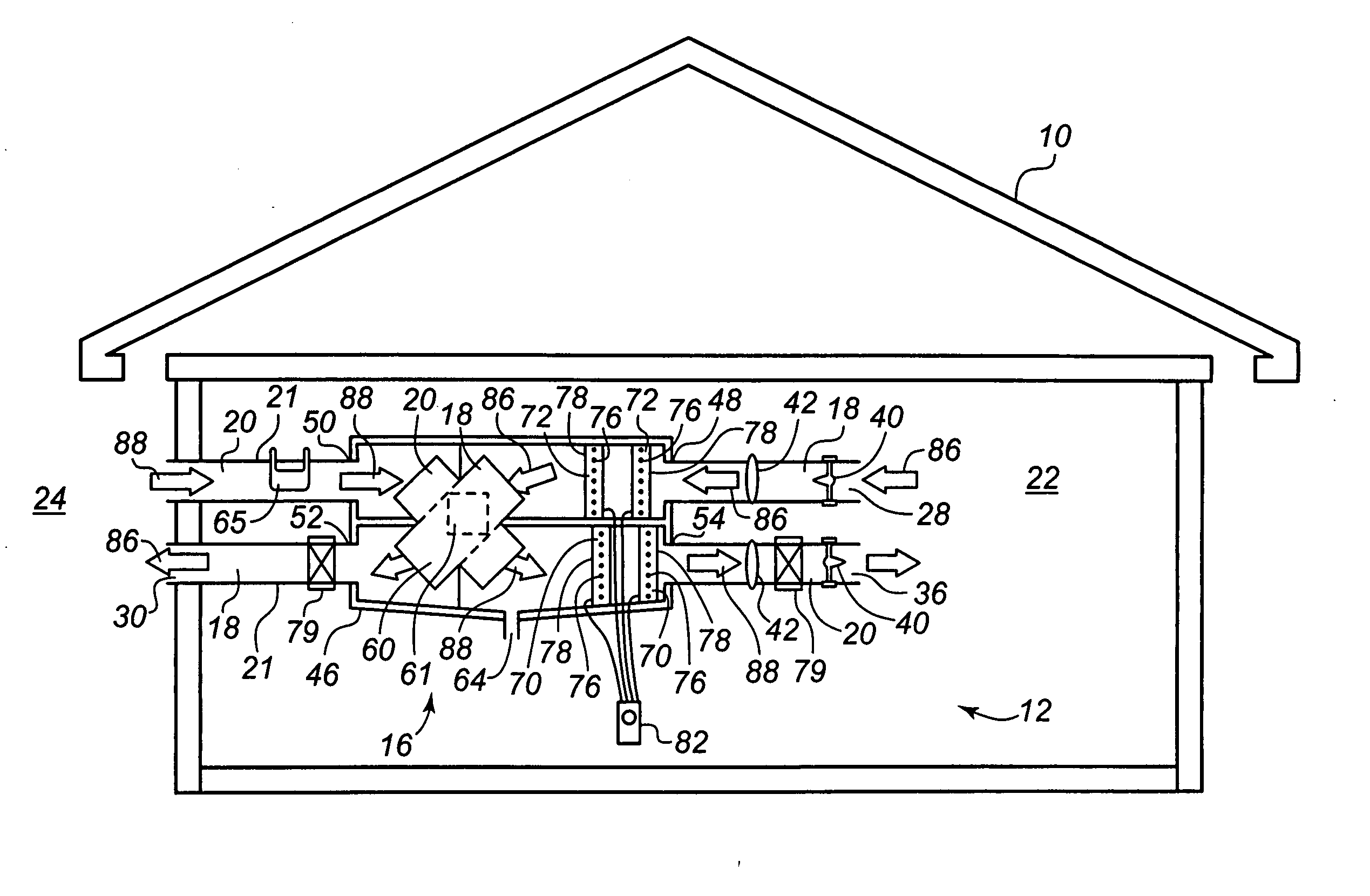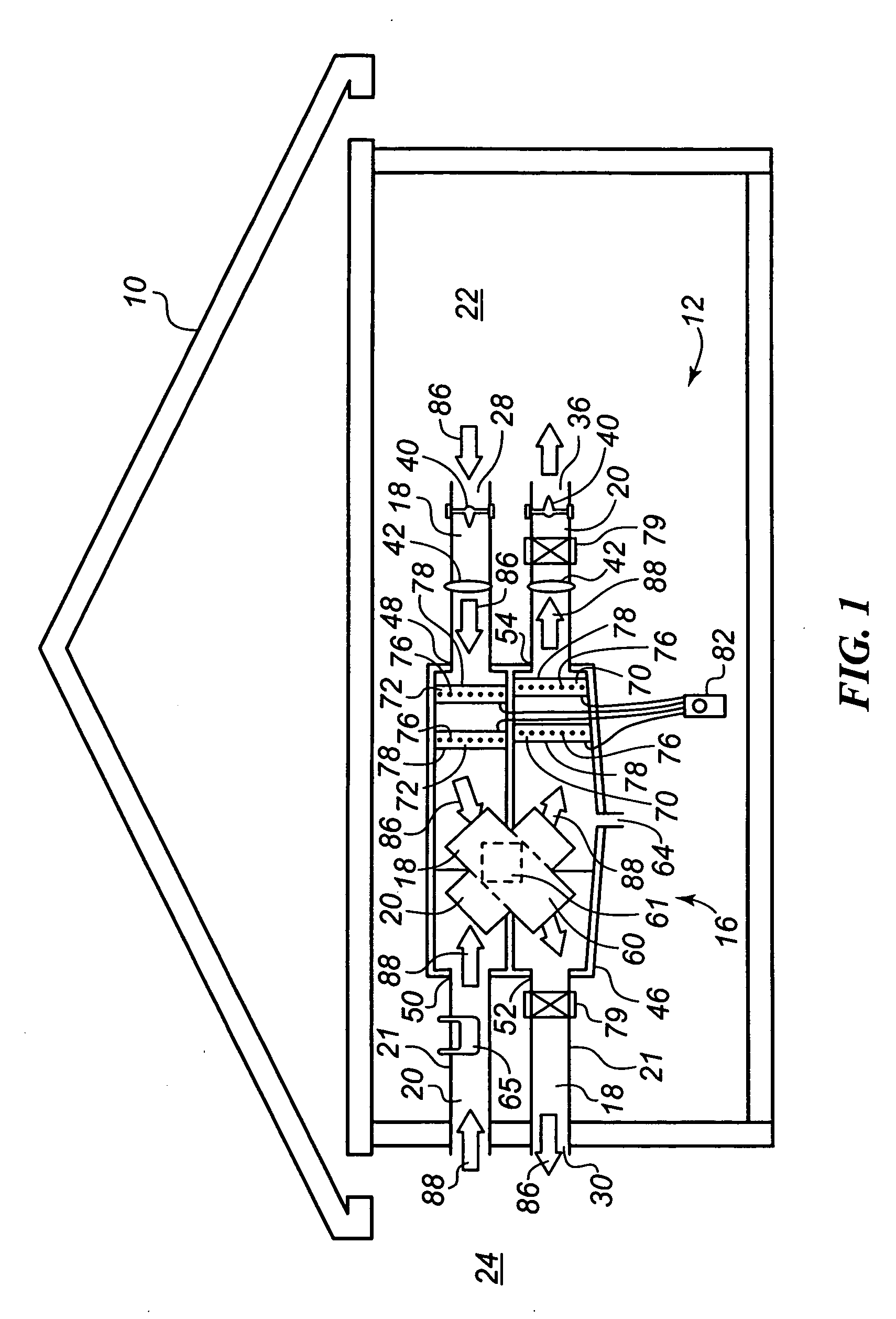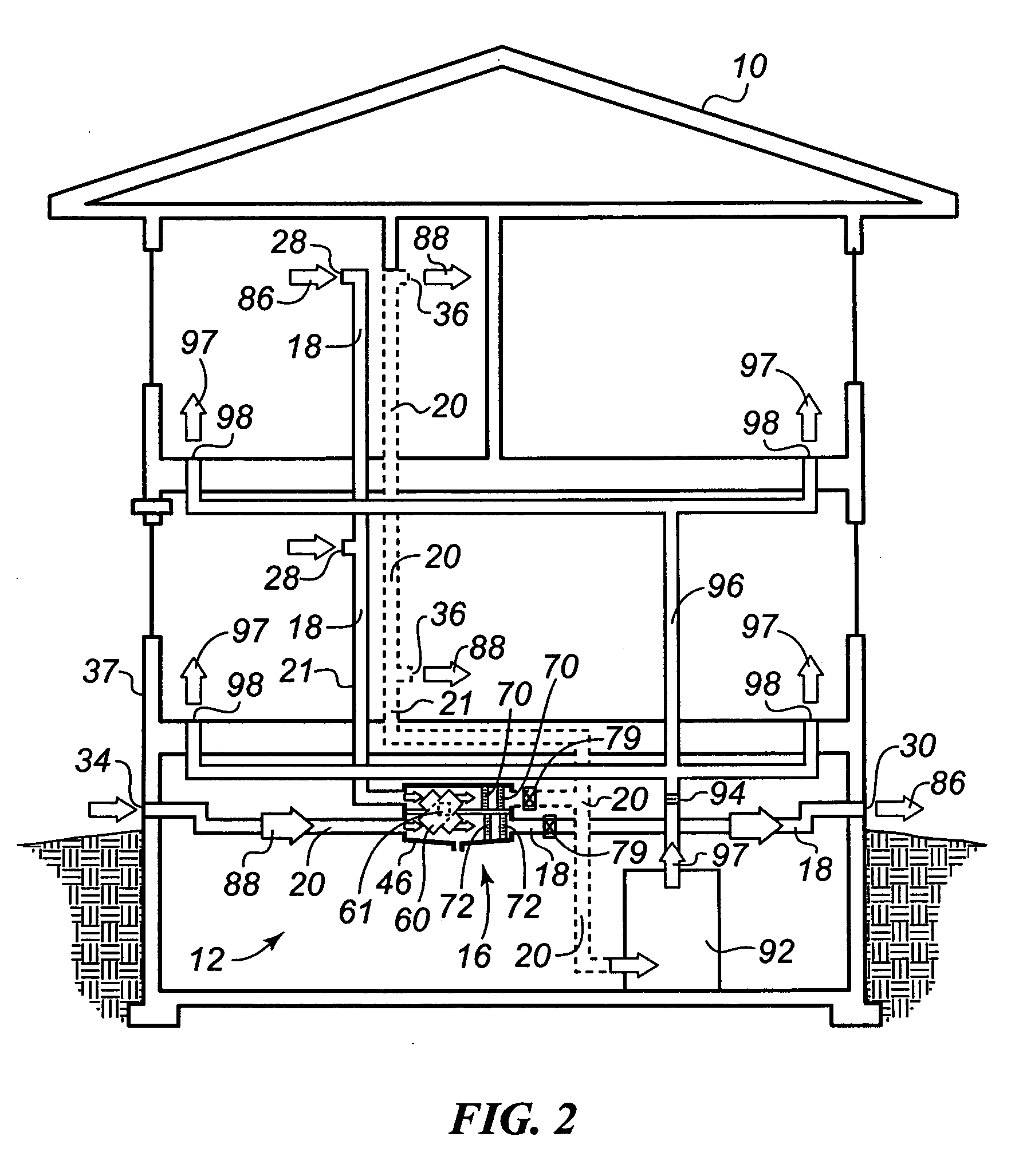Fanless building ventilator
a ventilator and fanless technology, applied in ventilation systems, heating types, separation processes, etc., can solve problems such as the effect of affecting the air quality of the building, the health of the occupant, and the illness of the building, so as to reduce the operating cost, and reduce the effect of nois
- Summary
- Abstract
- Description
- Claims
- Application Information
AI Technical Summary
Benefits of technology
Problems solved by technology
Method used
Image
Examples
Embodiment Construction
[0015] Referring to FIG. 1, a building 10 having a ventilation system 12 constructed in accordance with the present invention is illustrated. As will be described more fully below, the ventilation system 12 is constructed to quietly and efficiently move a fluid (e.g. air) into and out of the building 10 without using moving parts.
[0016] As shown, the preferred ventilation system 12 generally comprises a heat recovery ventilator and / or an energy recovery ventilator (hereinafter referred to generally as an HRV / ERV unit 16), a stale air passage 18 and a fresh air passage 20. It will be appreciated that all ventilation systems do not require an HRV / ERV unit.
[0017] The stale air passage 18 and the fresh air passage 20 are relatively similar in that they both provide a passage defined by a network of interconnected sealed ducts 21 that connect the interior 22 of the building 10 with the exterior 24 of the building 10 such that the interior 22 and exterior are in controlled fluid communi...
PUM
 Login to View More
Login to View More Abstract
Description
Claims
Application Information
 Login to View More
Login to View More - R&D
- Intellectual Property
- Life Sciences
- Materials
- Tech Scout
- Unparalleled Data Quality
- Higher Quality Content
- 60% Fewer Hallucinations
Browse by: Latest US Patents, China's latest patents, Technical Efficacy Thesaurus, Application Domain, Technology Topic, Popular Technical Reports.
© 2025 PatSnap. All rights reserved.Legal|Privacy policy|Modern Slavery Act Transparency Statement|Sitemap|About US| Contact US: help@patsnap.com



